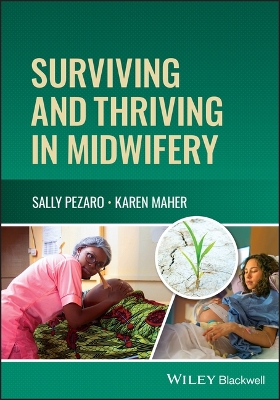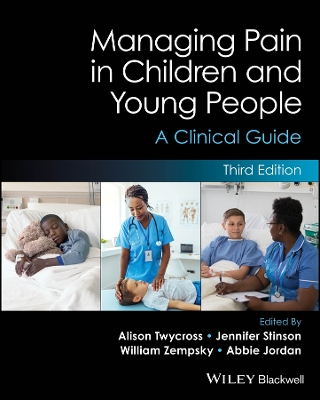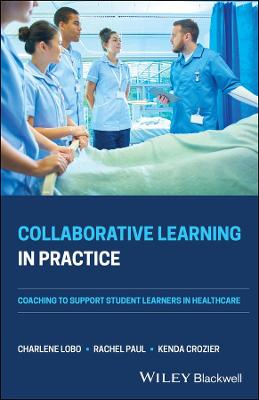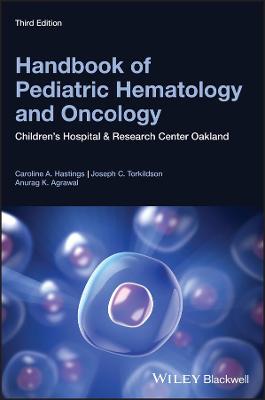Nursing Care of Children and Young People with Long-Term Conditions
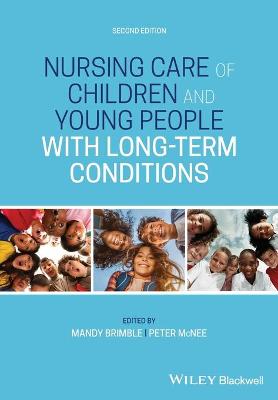 -15%
portes grátis
-15%
portes grátis
Nursing Care of Children and Young People with Long-Term Conditions
Brimble, Mandy; McNee, Peter
John Wiley and Sons Ltd
01/2021
304
Mole
Inglês
9781119653110
15 a 20 dias
526
Descrição não disponível.
Contributors xiii
Introduction xvii
1 The Definition and Aetiology of Long-Term Conditions 1
Sian Bill and Angharad Dwynwen Barklam
Introduction 1
Aim of the chapter 1
Intended learning outcomes 2
Genetic knowledge 2
The need for genetic knowledge 3
The ethical, legal and social implications in the screening, testing and recording of genetic information 4
The determinants of genetic disease 5
Chromosomal abnormalities 6
Chromosomal nomenclature 8
Single gene (Mendelian) disorders 8
Autosomal recessive inheritance 9
Autosomal dominant inheritance 11
X-linked recessive inheritance 11
X-linked dominant inheritance 12
Inherited variations 12
Antenatal period 15
The neonatal period 17
Post-neonatal period 19
Adolescent period 22
Conclusion 23
Useful websites 24
References 25
2 Context of Care and Service Delivery 31
Peter McNee
Introduction 31
Aim of the chapter 31
Intended learning outcomes 31
Context of change 32
Political influences 32
Economic influences 33
Social influences 34
New models of service delivery 35
Modernising workforce 36
Increasing patient expectations and engagement 38
Locally based commissioning 39
Staffing implications 40
Staff education and competence 40
Meeting parental needs 42
Innovative practices - new roles 44
Telemedicine 45
Key worker role 45
Mental health issues 47
Multiagency working 47
Multidisciplinary team (MDT)/Interprofessional working (IPW) 48
Nursing implications, challenges and opportunities in MDT/IPW working 49
Conclusion 49
Acknowledgement 50
Useful websites 50
References 50
3 Impact upon the Child and Parents 55
Dawn Daniel and Mandy Brimble
Introduction 55
Aim of the chapter 55
Intended learning outcomes 56
Theories of grief, loss and change 56
Initial impact 60
Type 1 diabetes 60
Impact on parents 61
Impact on the child/young person with a long-term illness 62
Continuing care 65
Coping, adaptation and change 66
Theories of stress and coping 67
Coping strategies 68
Normalisation 69
Conclusion 74
Acknowledgement 75
Useful websites 75
References 75
4 Impact On Siblings 81
Amie Hodges, Daniel Kelly, and Julia Tod
Introduction 81
Aim of the chapter 81
Intended learning outcomes 82
The sibling relationship 82
Sibling identity 83
Sibling boundaries 83
Sibling interaction 84
Parental influence on the sibling relationship 85
The impact of a long-term condition on the sibling 86
A new diagnosis 86
Changes in family life for the sibling 87
Emotional labour 88
Sibling empathy and maturity 88
Siblings as carers 89
Young carers and carers' assessment 90
Recognising the unmet needs of siblings 91
Conclusion 93
Useful websites 93
References 94
5 A Holistic Approach to Meeting Physical, Social and Psychological Needs 97
Amie Hodges and Julia Tod
Introduction 97
Aim of the chapter 97
Intended learning outcomes 98
Prevalence of eczema 98
Nursing considerations 99
Presentation of eczema 100
Treatment of eczema with emollients 101
Topical emollients 101
Safety 102
Effects of the itch scratch cycle 102
Family stress and coping 103
Assessment and immediate intervention 105
Current care management plan 106
Wet wraps 106
Topical steroids 107
Pain assessment 107
Antihistamines 109
Play and distraction 109
Bullying 110
Spirituality 112
Traditional complementary and alternative medicine 114
Health promotion 115
Conclusion 116
Useful websites 116
Recommended reading 117
References 117
6 Empowering Children, Young People and their Families 121
Mandy Brimble
Introduction 121
Aim of the chapter 121
Intended learning outcomes 122
Health promotion 122
Empowerment 125
Approaches to health promotion 126
Parental smoking 129
Obesity 131
Non-compliance 135
Steroids 135
Restrictive physical interventions and therapeutic holding 136
Conclusion 139
Useful websites 140
References 140
7 Ethical Issues 145
Peter McNee
Introduction 145
Aim of the chapter 145
Intended learning outcomes 146
Why study ethics? 146
A definition of ethics 146
Introduction to ethical theories 147
Theory of consequentialism 147
Utilitarianism 148
Act utilitarianism 148
Rule utilitarianism 148
Theory of deontology 151
Ethical principles 154
Principle of autonomy 155
Ethical principle of beneficence 157
Issues 158
Ethical principle of non-maleficence 159
Ethical principle of justice 161
A nursing ethic 162
Definition of an ethical dilemma 163
Ethical decision-making 164
A suggested model for ethics in practice/decision-making 166
Conclusion 167
Acknowledgement 167
Useful websites 168
Recommended reading 168
References 168
8 Children and Young People's Continuing Care 171
Melda Price and Sian Thomas
Introduction 171
Aim of the chapter 172
Intended learning outcomes 172
Continuing care needs and integrated children services 172
Transition to home care 177
Blended diets 179
Children and young people's continuing care 180
Identifying an appropriate care package 181
Key worker role/care coordinator 182
Community children's nursing services 182
Provision of equipment for home care 184
Carers' assessments 185
The need for respite or short break provision 186
Home adaptations 188
Education and support at school 188
Support for families 189
Conclusion 189
Useful websites 190
References 190
9 Acute Emergencies 193
Martina Nathan, Peter McNee, and Jane Davies
Introduction 193
Aim of the chapter 193
Intended learning outcomes 193
Acute emergencies 194
Aetiology 196
Environmental factors 196
Pathophysiology 197
Presentation 197
Prognosis 198
Treatment 200
Administration of chemotherapy 201
Central venous access devices 202
Sepsis 205
Children's critical care 206
Family-focused care 207
Multidisciplinary working across different organisations 208
Conclusion 209
Useful websites 210
References 210
10 Adolescence 213
Sian Bill and Taryn Eccleston
Introduction 213
Aim of the chapter 213
Intended learning outcomes 214
Existing knowledge 214
Why nurses need knowledge of adolescence 214
Brief overview of adolescent development 215
Understanding long-term conditions from a young person's perspective 216
Chronic kidney disease 217
Communicating with young people 220
Communication issues for Thomas 221
Peer groups 221
The impact of having a long-term condition on growth and development 224
Delayed growth and puberty 224
Inconsistencies between physical and psychological development 225
Body image and self-esteem 225
Compliance and non-compliance, concordance and co-production 227
The social aspects of having a long-term condition 228
Young people, long-term conditions and school 229
Bullying 230
The hospitalised adolescent 231
Issues for young people in hospital 232
Specialised adolescent units 234
Service delivery and adolescent health 235
Promoting excellence 236
The role of the nurse 236
Conclusion 237
Acknowledgement 237
Useful websites 238
Recommended reading 238
References 238
11 Transitional Care 243
Sian Bill and Amie Hodges
Introduction 243
Aim of the chapter 243
Intended learning outcomes 243
Overview of cystic fibrosis 244
Further complications 246
Genotype 246
Management 247
Adolescents with a long-term condition 247
Transitional care 248
The philosophy of transitional care 248
Models of transition 248
Issues regarding transition for adolescents 250
Gaining autonomy 252
Managing a long-term condition 252
Support and decision-making 252
The role of the nurse 254
Promoting the paradigm shift 257
The principles of successful transitional care 258
Conclusion 262
Useful websites 262
Recommended reading 262
References 263
Index 267
Introduction xvii
1 The Definition and Aetiology of Long-Term Conditions 1
Sian Bill and Angharad Dwynwen Barklam
Introduction 1
Aim of the chapter 1
Intended learning outcomes 2
Genetic knowledge 2
The need for genetic knowledge 3
The ethical, legal and social implications in the screening, testing and recording of genetic information 4
The determinants of genetic disease 5
Chromosomal abnormalities 6
Chromosomal nomenclature 8
Single gene (Mendelian) disorders 8
Autosomal recessive inheritance 9
Autosomal dominant inheritance 11
X-linked recessive inheritance 11
X-linked dominant inheritance 12
Inherited variations 12
Antenatal period 15
The neonatal period 17
Post-neonatal period 19
Adolescent period 22
Conclusion 23
Useful websites 24
References 25
2 Context of Care and Service Delivery 31
Peter McNee
Introduction 31
Aim of the chapter 31
Intended learning outcomes 31
Context of change 32
Political influences 32
Economic influences 33
Social influences 34
New models of service delivery 35
Modernising workforce 36
Increasing patient expectations and engagement 38
Locally based commissioning 39
Staffing implications 40
Staff education and competence 40
Meeting parental needs 42
Innovative practices - new roles 44
Telemedicine 45
Key worker role 45
Mental health issues 47
Multiagency working 47
Multidisciplinary team (MDT)/Interprofessional working (IPW) 48
Nursing implications, challenges and opportunities in MDT/IPW working 49
Conclusion 49
Acknowledgement 50
Useful websites 50
References 50
3 Impact upon the Child and Parents 55
Dawn Daniel and Mandy Brimble
Introduction 55
Aim of the chapter 55
Intended learning outcomes 56
Theories of grief, loss and change 56
Initial impact 60
Type 1 diabetes 60
Impact on parents 61
Impact on the child/young person with a long-term illness 62
Continuing care 65
Coping, adaptation and change 66
Theories of stress and coping 67
Coping strategies 68
Normalisation 69
Conclusion 74
Acknowledgement 75
Useful websites 75
References 75
4 Impact On Siblings 81
Amie Hodges, Daniel Kelly, and Julia Tod
Introduction 81
Aim of the chapter 81
Intended learning outcomes 82
The sibling relationship 82
Sibling identity 83
Sibling boundaries 83
Sibling interaction 84
Parental influence on the sibling relationship 85
The impact of a long-term condition on the sibling 86
A new diagnosis 86
Changes in family life for the sibling 87
Emotional labour 88
Sibling empathy and maturity 88
Siblings as carers 89
Young carers and carers' assessment 90
Recognising the unmet needs of siblings 91
Conclusion 93
Useful websites 93
References 94
5 A Holistic Approach to Meeting Physical, Social and Psychological Needs 97
Amie Hodges and Julia Tod
Introduction 97
Aim of the chapter 97
Intended learning outcomes 98
Prevalence of eczema 98
Nursing considerations 99
Presentation of eczema 100
Treatment of eczema with emollients 101
Topical emollients 101
Safety 102
Effects of the itch scratch cycle 102
Family stress and coping 103
Assessment and immediate intervention 105
Current care management plan 106
Wet wraps 106
Topical steroids 107
Pain assessment 107
Antihistamines 109
Play and distraction 109
Bullying 110
Spirituality 112
Traditional complementary and alternative medicine 114
Health promotion 115
Conclusion 116
Useful websites 116
Recommended reading 117
References 117
6 Empowering Children, Young People and their Families 121
Mandy Brimble
Introduction 121
Aim of the chapter 121
Intended learning outcomes 122
Health promotion 122
Empowerment 125
Approaches to health promotion 126
Parental smoking 129
Obesity 131
Non-compliance 135
Steroids 135
Restrictive physical interventions and therapeutic holding 136
Conclusion 139
Useful websites 140
References 140
7 Ethical Issues 145
Peter McNee
Introduction 145
Aim of the chapter 145
Intended learning outcomes 146
Why study ethics? 146
A definition of ethics 146
Introduction to ethical theories 147
Theory of consequentialism 147
Utilitarianism 148
Act utilitarianism 148
Rule utilitarianism 148
Theory of deontology 151
Ethical principles 154
Principle of autonomy 155
Ethical principle of beneficence 157
Issues 158
Ethical principle of non-maleficence 159
Ethical principle of justice 161
A nursing ethic 162
Definition of an ethical dilemma 163
Ethical decision-making 164
A suggested model for ethics in practice/decision-making 166
Conclusion 167
Acknowledgement 167
Useful websites 168
Recommended reading 168
References 168
8 Children and Young People's Continuing Care 171
Melda Price and Sian Thomas
Introduction 171
Aim of the chapter 172
Intended learning outcomes 172
Continuing care needs and integrated children services 172
Transition to home care 177
Blended diets 179
Children and young people's continuing care 180
Identifying an appropriate care package 181
Key worker role/care coordinator 182
Community children's nursing services 182
Provision of equipment for home care 184
Carers' assessments 185
The need for respite or short break provision 186
Home adaptations 188
Education and support at school 188
Support for families 189
Conclusion 189
Useful websites 190
References 190
9 Acute Emergencies 193
Martina Nathan, Peter McNee, and Jane Davies
Introduction 193
Aim of the chapter 193
Intended learning outcomes 193
Acute emergencies 194
Aetiology 196
Environmental factors 196
Pathophysiology 197
Presentation 197
Prognosis 198
Treatment 200
Administration of chemotherapy 201
Central venous access devices 202
Sepsis 205
Children's critical care 206
Family-focused care 207
Multidisciplinary working across different organisations 208
Conclusion 209
Useful websites 210
References 210
10 Adolescence 213
Sian Bill and Taryn Eccleston
Introduction 213
Aim of the chapter 213
Intended learning outcomes 214
Existing knowledge 214
Why nurses need knowledge of adolescence 214
Brief overview of adolescent development 215
Understanding long-term conditions from a young person's perspective 216
Chronic kidney disease 217
Communicating with young people 220
Communication issues for Thomas 221
Peer groups 221
The impact of having a long-term condition on growth and development 224
Delayed growth and puberty 224
Inconsistencies between physical and psychological development 225
Body image and self-esteem 225
Compliance and non-compliance, concordance and co-production 227
The social aspects of having a long-term condition 228
Young people, long-term conditions and school 229
Bullying 230
The hospitalised adolescent 231
Issues for young people in hospital 232
Specialised adolescent units 234
Service delivery and adolescent health 235
Promoting excellence 236
The role of the nurse 236
Conclusion 237
Acknowledgement 237
Useful websites 238
Recommended reading 238
References 238
11 Transitional Care 243
Sian Bill and Amie Hodges
Introduction 243
Aim of the chapter 243
Intended learning outcomes 243
Overview of cystic fibrosis 244
Further complications 246
Genotype 246
Management 247
Adolescents with a long-term condition 247
Transitional care 248
The philosophy of transitional care 248
Models of transition 248
Issues regarding transition for adolescents 250
Gaining autonomy 252
Managing a long-term condition 252
Support and decision-making 252
The role of the nurse 254
Promoting the paradigm shift 257
The principles of successful transitional care 258
Conclusion 262
Useful websites 262
Recommended reading 262
References 263
Index 267
Este título pertence ao(s) assunto(s) indicados(s). Para ver outros títulos clique no assunto desejado.
pediatric nursing chronic illness; nursing chronically ill children; pediatric chronic illness care; children's nursing chronic illness; children's nursing long-term care; long-term pediatric nursing; pediatric nursing chronic illness case studies
Contributors xiii
Introduction xvii
1 The Definition and Aetiology of Long-Term Conditions 1
Sian Bill and Angharad Dwynwen Barklam
Introduction 1
Aim of the chapter 1
Intended learning outcomes 2
Genetic knowledge 2
The need for genetic knowledge 3
The ethical, legal and social implications in the screening, testing and recording of genetic information 4
The determinants of genetic disease 5
Chromosomal abnormalities 6
Chromosomal nomenclature 8
Single gene (Mendelian) disorders 8
Autosomal recessive inheritance 9
Autosomal dominant inheritance 11
X-linked recessive inheritance 11
X-linked dominant inheritance 12
Inherited variations 12
Antenatal period 15
The neonatal period 17
Post-neonatal period 19
Adolescent period 22
Conclusion 23
Useful websites 24
References 25
2 Context of Care and Service Delivery 31
Peter McNee
Introduction 31
Aim of the chapter 31
Intended learning outcomes 31
Context of change 32
Political influences 32
Economic influences 33
Social influences 34
New models of service delivery 35
Modernising workforce 36
Increasing patient expectations and engagement 38
Locally based commissioning 39
Staffing implications 40
Staff education and competence 40
Meeting parental needs 42
Innovative practices - new roles 44
Telemedicine 45
Key worker role 45
Mental health issues 47
Multiagency working 47
Multidisciplinary team (MDT)/Interprofessional working (IPW) 48
Nursing implications, challenges and opportunities in MDT/IPW working 49
Conclusion 49
Acknowledgement 50
Useful websites 50
References 50
3 Impact upon the Child and Parents 55
Dawn Daniel and Mandy Brimble
Introduction 55
Aim of the chapter 55
Intended learning outcomes 56
Theories of grief, loss and change 56
Initial impact 60
Type 1 diabetes 60
Impact on parents 61
Impact on the child/young person with a long-term illness 62
Continuing care 65
Coping, adaptation and change 66
Theories of stress and coping 67
Coping strategies 68
Normalisation 69
Conclusion 74
Acknowledgement 75
Useful websites 75
References 75
4 Impact On Siblings 81
Amie Hodges, Daniel Kelly, and Julia Tod
Introduction 81
Aim of the chapter 81
Intended learning outcomes 82
The sibling relationship 82
Sibling identity 83
Sibling boundaries 83
Sibling interaction 84
Parental influence on the sibling relationship 85
The impact of a long-term condition on the sibling 86
A new diagnosis 86
Changes in family life for the sibling 87
Emotional labour 88
Sibling empathy and maturity 88
Siblings as carers 89
Young carers and carers' assessment 90
Recognising the unmet needs of siblings 91
Conclusion 93
Useful websites 93
References 94
5 A Holistic Approach to Meeting Physical, Social and Psychological Needs 97
Amie Hodges and Julia Tod
Introduction 97
Aim of the chapter 97
Intended learning outcomes 98
Prevalence of eczema 98
Nursing considerations 99
Presentation of eczema 100
Treatment of eczema with emollients 101
Topical emollients 101
Safety 102
Effects of the itch scratch cycle 102
Family stress and coping 103
Assessment and immediate intervention 105
Current care management plan 106
Wet wraps 106
Topical steroids 107
Pain assessment 107
Antihistamines 109
Play and distraction 109
Bullying 110
Spirituality 112
Traditional complementary and alternative medicine 114
Health promotion 115
Conclusion 116
Useful websites 116
Recommended reading 117
References 117
6 Empowering Children, Young People and their Families 121
Mandy Brimble
Introduction 121
Aim of the chapter 121
Intended learning outcomes 122
Health promotion 122
Empowerment 125
Approaches to health promotion 126
Parental smoking 129
Obesity 131
Non-compliance 135
Steroids 135
Restrictive physical interventions and therapeutic holding 136
Conclusion 139
Useful websites 140
References 140
7 Ethical Issues 145
Peter McNee
Introduction 145
Aim of the chapter 145
Intended learning outcomes 146
Why study ethics? 146
A definition of ethics 146
Introduction to ethical theories 147
Theory of consequentialism 147
Utilitarianism 148
Act utilitarianism 148
Rule utilitarianism 148
Theory of deontology 151
Ethical principles 154
Principle of autonomy 155
Ethical principle of beneficence 157
Issues 158
Ethical principle of non-maleficence 159
Ethical principle of justice 161
A nursing ethic 162
Definition of an ethical dilemma 163
Ethical decision-making 164
A suggested model for ethics in practice/decision-making 166
Conclusion 167
Acknowledgement 167
Useful websites 168
Recommended reading 168
References 168
8 Children and Young People's Continuing Care 171
Melda Price and Sian Thomas
Introduction 171
Aim of the chapter 172
Intended learning outcomes 172
Continuing care needs and integrated children services 172
Transition to home care 177
Blended diets 179
Children and young people's continuing care 180
Identifying an appropriate care package 181
Key worker role/care coordinator 182
Community children's nursing services 182
Provision of equipment for home care 184
Carers' assessments 185
The need for respite or short break provision 186
Home adaptations 188
Education and support at school 188
Support for families 189
Conclusion 189
Useful websites 190
References 190
9 Acute Emergencies 193
Martina Nathan, Peter McNee, and Jane Davies
Introduction 193
Aim of the chapter 193
Intended learning outcomes 193
Acute emergencies 194
Aetiology 196
Environmental factors 196
Pathophysiology 197
Presentation 197
Prognosis 198
Treatment 200
Administration of chemotherapy 201
Central venous access devices 202
Sepsis 205
Children's critical care 206
Family-focused care 207
Multidisciplinary working across different organisations 208
Conclusion 209
Useful websites 210
References 210
10 Adolescence 213
Sian Bill and Taryn Eccleston
Introduction 213
Aim of the chapter 213
Intended learning outcomes 214
Existing knowledge 214
Why nurses need knowledge of adolescence 214
Brief overview of adolescent development 215
Understanding long-term conditions from a young person's perspective 216
Chronic kidney disease 217
Communicating with young people 220
Communication issues for Thomas 221
Peer groups 221
The impact of having a long-term condition on growth and development 224
Delayed growth and puberty 224
Inconsistencies between physical and psychological development 225
Body image and self-esteem 225
Compliance and non-compliance, concordance and co-production 227
The social aspects of having a long-term condition 228
Young people, long-term conditions and school 229
Bullying 230
The hospitalised adolescent 231
Issues for young people in hospital 232
Specialised adolescent units 234
Service delivery and adolescent health 235
Promoting excellence 236
The role of the nurse 236
Conclusion 237
Acknowledgement 237
Useful websites 238
Recommended reading 238
References 238
11 Transitional Care 243
Sian Bill and Amie Hodges
Introduction 243
Aim of the chapter 243
Intended learning outcomes 243
Overview of cystic fibrosis 244
Further complications 246
Genotype 246
Management 247
Adolescents with a long-term condition 247
Transitional care 248
The philosophy of transitional care 248
Models of transition 248
Issues regarding transition for adolescents 250
Gaining autonomy 252
Managing a long-term condition 252
Support and decision-making 252
The role of the nurse 254
Promoting the paradigm shift 257
The principles of successful transitional care 258
Conclusion 262
Useful websites 262
Recommended reading 262
References 263
Index 267
Introduction xvii
1 The Definition and Aetiology of Long-Term Conditions 1
Sian Bill and Angharad Dwynwen Barklam
Introduction 1
Aim of the chapter 1
Intended learning outcomes 2
Genetic knowledge 2
The need for genetic knowledge 3
The ethical, legal and social implications in the screening, testing and recording of genetic information 4
The determinants of genetic disease 5
Chromosomal abnormalities 6
Chromosomal nomenclature 8
Single gene (Mendelian) disorders 8
Autosomal recessive inheritance 9
Autosomal dominant inheritance 11
X-linked recessive inheritance 11
X-linked dominant inheritance 12
Inherited variations 12
Antenatal period 15
The neonatal period 17
Post-neonatal period 19
Adolescent period 22
Conclusion 23
Useful websites 24
References 25
2 Context of Care and Service Delivery 31
Peter McNee
Introduction 31
Aim of the chapter 31
Intended learning outcomes 31
Context of change 32
Political influences 32
Economic influences 33
Social influences 34
New models of service delivery 35
Modernising workforce 36
Increasing patient expectations and engagement 38
Locally based commissioning 39
Staffing implications 40
Staff education and competence 40
Meeting parental needs 42
Innovative practices - new roles 44
Telemedicine 45
Key worker role 45
Mental health issues 47
Multiagency working 47
Multidisciplinary team (MDT)/Interprofessional working (IPW) 48
Nursing implications, challenges and opportunities in MDT/IPW working 49
Conclusion 49
Acknowledgement 50
Useful websites 50
References 50
3 Impact upon the Child and Parents 55
Dawn Daniel and Mandy Brimble
Introduction 55
Aim of the chapter 55
Intended learning outcomes 56
Theories of grief, loss and change 56
Initial impact 60
Type 1 diabetes 60
Impact on parents 61
Impact on the child/young person with a long-term illness 62
Continuing care 65
Coping, adaptation and change 66
Theories of stress and coping 67
Coping strategies 68
Normalisation 69
Conclusion 74
Acknowledgement 75
Useful websites 75
References 75
4 Impact On Siblings 81
Amie Hodges, Daniel Kelly, and Julia Tod
Introduction 81
Aim of the chapter 81
Intended learning outcomes 82
The sibling relationship 82
Sibling identity 83
Sibling boundaries 83
Sibling interaction 84
Parental influence on the sibling relationship 85
The impact of a long-term condition on the sibling 86
A new diagnosis 86
Changes in family life for the sibling 87
Emotional labour 88
Sibling empathy and maturity 88
Siblings as carers 89
Young carers and carers' assessment 90
Recognising the unmet needs of siblings 91
Conclusion 93
Useful websites 93
References 94
5 A Holistic Approach to Meeting Physical, Social and Psychological Needs 97
Amie Hodges and Julia Tod
Introduction 97
Aim of the chapter 97
Intended learning outcomes 98
Prevalence of eczema 98
Nursing considerations 99
Presentation of eczema 100
Treatment of eczema with emollients 101
Topical emollients 101
Safety 102
Effects of the itch scratch cycle 102
Family stress and coping 103
Assessment and immediate intervention 105
Current care management plan 106
Wet wraps 106
Topical steroids 107
Pain assessment 107
Antihistamines 109
Play and distraction 109
Bullying 110
Spirituality 112
Traditional complementary and alternative medicine 114
Health promotion 115
Conclusion 116
Useful websites 116
Recommended reading 117
References 117
6 Empowering Children, Young People and their Families 121
Mandy Brimble
Introduction 121
Aim of the chapter 121
Intended learning outcomes 122
Health promotion 122
Empowerment 125
Approaches to health promotion 126
Parental smoking 129
Obesity 131
Non-compliance 135
Steroids 135
Restrictive physical interventions and therapeutic holding 136
Conclusion 139
Useful websites 140
References 140
7 Ethical Issues 145
Peter McNee
Introduction 145
Aim of the chapter 145
Intended learning outcomes 146
Why study ethics? 146
A definition of ethics 146
Introduction to ethical theories 147
Theory of consequentialism 147
Utilitarianism 148
Act utilitarianism 148
Rule utilitarianism 148
Theory of deontology 151
Ethical principles 154
Principle of autonomy 155
Ethical principle of beneficence 157
Issues 158
Ethical principle of non-maleficence 159
Ethical principle of justice 161
A nursing ethic 162
Definition of an ethical dilemma 163
Ethical decision-making 164
A suggested model for ethics in practice/decision-making 166
Conclusion 167
Acknowledgement 167
Useful websites 168
Recommended reading 168
References 168
8 Children and Young People's Continuing Care 171
Melda Price and Sian Thomas
Introduction 171
Aim of the chapter 172
Intended learning outcomes 172
Continuing care needs and integrated children services 172
Transition to home care 177
Blended diets 179
Children and young people's continuing care 180
Identifying an appropriate care package 181
Key worker role/care coordinator 182
Community children's nursing services 182
Provision of equipment for home care 184
Carers' assessments 185
The need for respite or short break provision 186
Home adaptations 188
Education and support at school 188
Support for families 189
Conclusion 189
Useful websites 190
References 190
9 Acute Emergencies 193
Martina Nathan, Peter McNee, and Jane Davies
Introduction 193
Aim of the chapter 193
Intended learning outcomes 193
Acute emergencies 194
Aetiology 196
Environmental factors 196
Pathophysiology 197
Presentation 197
Prognosis 198
Treatment 200
Administration of chemotherapy 201
Central venous access devices 202
Sepsis 205
Children's critical care 206
Family-focused care 207
Multidisciplinary working across different organisations 208
Conclusion 209
Useful websites 210
References 210
10 Adolescence 213
Sian Bill and Taryn Eccleston
Introduction 213
Aim of the chapter 213
Intended learning outcomes 214
Existing knowledge 214
Why nurses need knowledge of adolescence 214
Brief overview of adolescent development 215
Understanding long-term conditions from a young person's perspective 216
Chronic kidney disease 217
Communicating with young people 220
Communication issues for Thomas 221
Peer groups 221
The impact of having a long-term condition on growth and development 224
Delayed growth and puberty 224
Inconsistencies between physical and psychological development 225
Body image and self-esteem 225
Compliance and non-compliance, concordance and co-production 227
The social aspects of having a long-term condition 228
Young people, long-term conditions and school 229
Bullying 230
The hospitalised adolescent 231
Issues for young people in hospital 232
Specialised adolescent units 234
Service delivery and adolescent health 235
Promoting excellence 236
The role of the nurse 236
Conclusion 237
Acknowledgement 237
Useful websites 238
Recommended reading 238
References 238
11 Transitional Care 243
Sian Bill and Amie Hodges
Introduction 243
Aim of the chapter 243
Intended learning outcomes 243
Overview of cystic fibrosis 244
Further complications 246
Genotype 246
Management 247
Adolescents with a long-term condition 247
Transitional care 248
The philosophy of transitional care 248
Models of transition 248
Issues regarding transition for adolescents 250
Gaining autonomy 252
Managing a long-term condition 252
Support and decision-making 252
The role of the nurse 254
Promoting the paradigm shift 257
The principles of successful transitional care 258
Conclusion 262
Useful websites 262
Recommended reading 262
References 263
Index 267
Este título pertence ao(s) assunto(s) indicados(s). Para ver outros títulos clique no assunto desejado.

